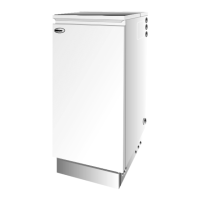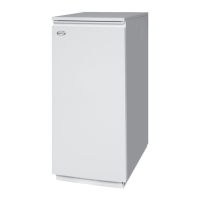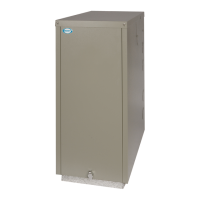Pellet Specification,
Storage & Delivery
13
3 Pellet Specification, Storage & Delivery
3.1 Pellet Specification
Grant SPIRA boilers are designed to
run on EN Plus A1 wood pellets that
comply with EN 14961 and meet the
following of criteria:
The following terms are commonly used when describing the properties of wood pellets:
Additives Additives are used to improve the stability of the pellets. If manufactured correctly, and of a sufficiently low
moisture content, quality pellets will require no additives.
Ash Ash represents the non-combustible content of the pellet. Higher ash content reduces the calorific value of
the pellet and requires the appliance to be cleaned more frequently.
Average Length To provide a predictable flow of fuel into the burner, the recommended length of a pellet is deemed greater
than 5mm and less than 5 times the diameter.
Bulk Density Bulk density is the ratio between the weight of the pellet and the amount of space they take up. A good
quality pellet will have a density of 650 kg/m
3
.
Chlorine High levels of chlorine in the flue gases emissions can give rise to corrosion.
Diameter The most common diameter is 6mm with some 8mm also available. This boiler is designed for 6mm only.
Fines Pellets are made from compressed wood. As pellets rub together they can break down slightly, producing
dust or fines. Too many fines indicate a poor quality pellet and can impede pellet flow in addition to
causing dust problems when delivering and storing the pellets.
Mechanical Durability This is a measure of how stable the pellet is and how likely it is to produce fines from normal handling.
A high durability percentage is an indicator of a good quality pellet.
Moisture Content Moisture affects the calorific value of the pellet. Low moisture content guarantees constant and predictable
combustion efficiency. Higher moisture contents can result in pellet breakdown.
Net Calorific Value This is the useful energy contained in a kilogram of fuel. This value is affected by the amount of non-
combustible materials (ash) and the moisture content of the pellet. Typical values range from 4.8 kWh/kg
to 5.2 kWh/kg.
Nitrogen High levels of nitrogen in the flue gases emissions can give rise to corrosion.
Sulphur High levels of sulphur in the flue gases emissions can give rise to corrosion.
Key Parameter Limits Category as per
EN 14961
Diameter 6mm
Average length L<5 x diameter D06,
Minimum and maximum length 3.15 to 40mm
Moisture Content <10% S0.05
Mechanical durability >97.5% DU 97.5
Amount of fines <1.0% F1.0
Additives None
Nitrogen <0.3% N0.3
Nett calorific value 4.8 to 5.2 kWh/kg
Bulk density ≈ 650 kg/m
3
Chlorine <0.03% CL 0.03

